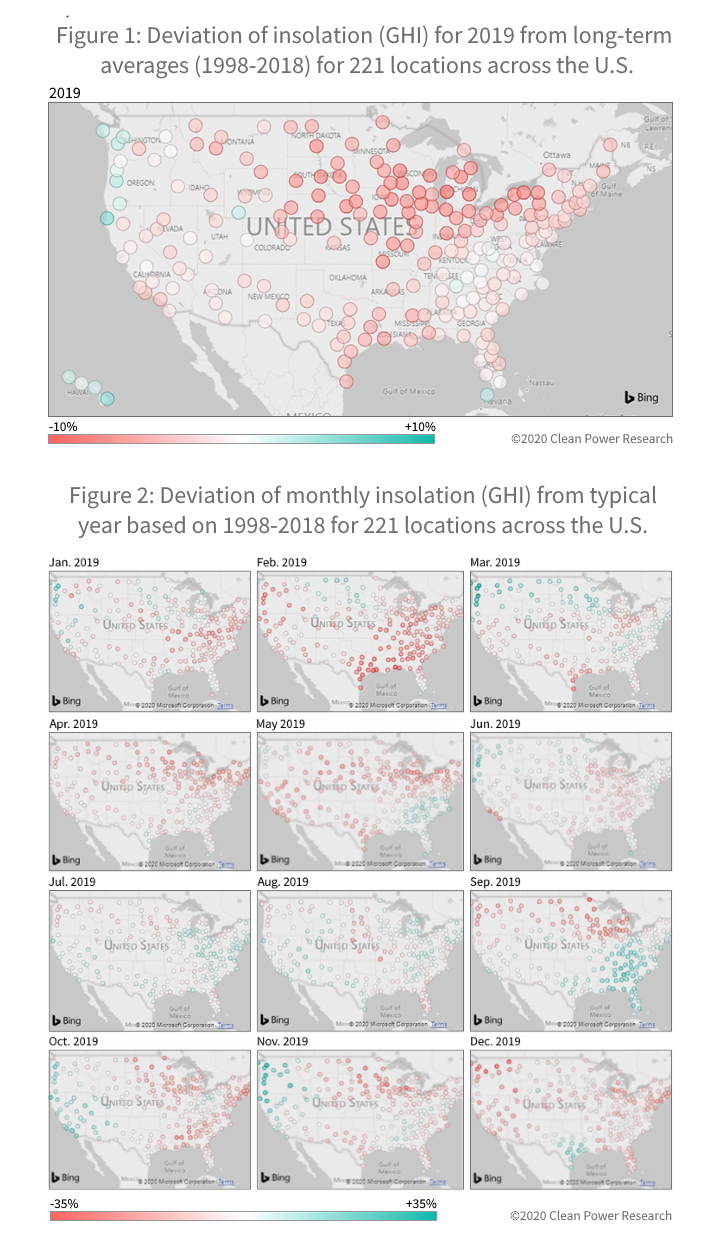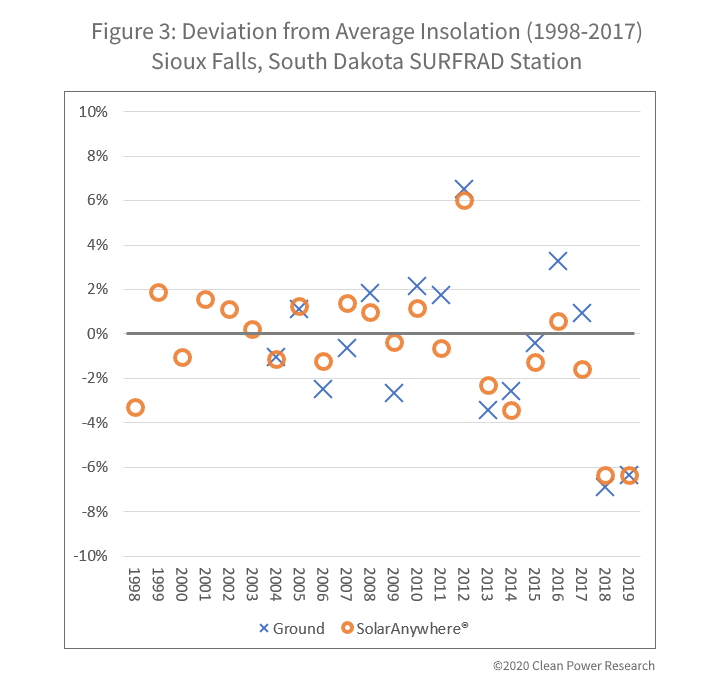In July 2019 we posted an article about unprecedented weather affecting the solar energy resource across much of the U.S. during 2018 and the first half of 2019. In that article, we anticipated a rebound during the second half of 2019. So now that 2019 is over, where did we end up for the full year?
SolarAnywhere reveals (mostly) moderate 2019 weather in the U.S.
Figures 1 and 2, below, show 2019 weather trends as measured by deviations in global horizontal irradiance from long-term averages. Global horizontal irradiance (GHI) is used because it’s a useful proxy for solar energy production when talking broadly about solar PV or if the specifics of the plants are unknown.
For most locations, deviations for the full year 2019 moderated and fell within +/-5% of the long-term averages. In other words, it was a fairly “typical” year with respect to sunlight on the ground. Notably the east coast saw neutral- to above-average insolation during July, August and September, breaking a streak of remarkably cloudy and wet weather.

The Midwest, however, saw record-low insolation for the second year in a row. Deviations ranged from -5 to -9%. Considering the prior data, this is a surprising result that deserves more discussion.
Severe weather affects solar energy resource in the Midwest
It was a difficult weather year for the Midwest which experienced its wettest year in history (1895-2019) for the second year in a row. The New York Times documented how “The Great Flood of 2019” affected some 14 million people . The flooding caused $20 billion in damages according to NOAA’s retrospective on 2019. While not a one-to-one correlation, more rain generally means less sun on the ground.
To further validate the departure from historical norms seen in the Midwest, we compared SolarAnywhere with independent measurements from the Sioux Falls, South Dakota SURFRAD station.

As shown in Figure 3, The ground observations confirm that 2018 and 2019 were the lowest years on record by a wide margin. Furthermore, the ground observations corroborate the size of the deviations reported by SolarAnywhere within 1%.
What does 2019 weather portend for the future of solar energy production?
Newer SolarAnywhere data shows that in the Midwest, the solar energy resource is more variable and marginally lower than previously reported. It also underscores why a long period of record and data currency are indispensable factors for solar resource data bankability.
SolarAnywhere SystemCheck® and Sites customers already have access to the latest data to include in their 2019 annual investor and company reports. If you’re a Typical Year subscriber, you can look forward to an updated typical year dataset this spring. However, if you are not a customer and need site-specific intel to produce your annual financial reports, or would like to learn more about any of our services benefitting the solar industry and utilities, please get in touch!
